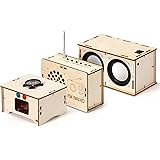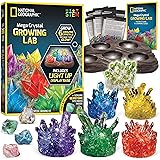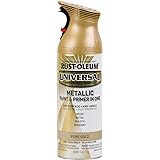Imagine this: you’re scrolling through Pinterest, captivated by stunning kitchen transformations, but then reality hits. Your budget looks more like a piggy bank’s last coins than a renovator’s dream fund. Sound familiar? Many of us dream of a fresh kitchen without the nightmare of huge expenses. That’s exactly where the magic of a budget-friendly kitchen makeover, like the one shared in the video above, comes in.
This fantastic video shows how a young woman tackled her kitchen’s drabness head-on, delivering impressive results for just around $300! It’s an inspiring example of how creativity and elbow grease can transform a space without draining your savings. If you’re ready to roll up your sleeves and explore some truly affordable kitchen updates, you’ve come to the right place. Let’s dive deeper into these ingenious DIY strategies.
Embracing the DIY Spirit for Your Kitchen Renovation
The core message from this kitchen makeover journey is clear: you don’t need professional tools or an unlimited budget to make significant changes. Sometimes, the most beautiful transformations happen when you work with what you have, and aren’t afraid to get a little imperfect. This approach is perfect for tackling a $300 DIY Kitchen Makeover.
Thinking like a DIYer means seeing potential where others see problems. It’s about being resourceful, whether that means finding materials on clearance or improvising with the tools you already own. This mindset opens up a world of possibilities for affordable home improvement projects.
Transforming Your Kitchen Peninsula with Paneling
The peninsula, often a focal point in open-concept kitchens, can drastically impact the room’s overall feel. In the video, a dull particle board back was transformed into a charming feature using a simple white pine panel. This instantly upgraded the kitchen’s aesthetic, moving it away from its outdated look.
Selecting an affordable wood panel, like the 48-inch by 96-inch white pine panel found for a great price, is a brilliant move. Most home improvement stores offer cutting services for a small fee (around $2 and change per cut), which is invaluable if you don’t own a truck or a table saw. Just like painting a canvas, getting your pieces precisely cut can make all the difference, even if you still need to fine-tune them at home.
Securing and Finishing Your New Peninsula Back
When attaching panels, an adhesive like liquid nails provides a strong bond, acting like a super-strong glue. For extra security, especially if you lack a nail gun, Brad nails can be hammered in, then later concealed. It’s a bit like adding stitching to a fabric that’s already glued; it ensures everything stays perfectly in place.
Adding trim pieces, like corner trim (which can be as little as $5.20 for a piece that yields multiple sections), frames your work beautifully. Finishing touches like painter’s caulk and a fresh coat of flat white paint cover any nail marks or small gaps. This results in a seamless, professional appearance that belies the low cost and DIY effort, perfectly suited for an affordable kitchen makeover.
Giving Bar Stools a Second Life: The Upholstery Trick
Ugly bar stools can be like a flat note in an otherwise harmonious kitchen symphony. Instead of buying new ones, which can easily cost hundreds, the video demonstrates the power of reupholstering. It’s a budget kitchen update that can change the entire vibe of your eating area.
Finding fabric you already own, or scouting clearance sections at craft stores, is a golden rule for thrifty decor. The process involves removing old fabric and staples, then simply tracing the old fabric onto your new material for a perfect fit. Using a stapler to attach the new fabric is surprisingly easy, giving your stools a completely fresh look.
This method not only saves money but also gives you the freedom to choose a fabric that truly complements your updated kitchen design. It’s an eco-friendly option too, reducing waste by repurposing existing furniture.
Brilliant Backsplash on a Budget: Adhesive Sheets and Clearance Tiles
A backsplash adds personality and protection to your kitchen, but traditional installation with mortar and grout can be daunting and expensive. The video highlights a genius shortcut for a DIY backsplash: adhesive sheets.
These double-sided, super-strong sticky sheets eliminate the need for messy mortar, making installation quicker and cleaner. They act as a strong foundation, allowing you to carefully place your mosaic tiles. The trick is to position the tile perfectly before pressing down firmly, much like applying a large sticker; once it’s set, it’s hard to budge.
Hunting for High-Value Tiles
The key to an inexpensive backsplash often lies in finding clearance tiles. Prices can vary dramatically, with quality mosaic sheets sometimes available for as little as $2.98 to $3.33 per square foot at stores like Lowe’s or Home Depot. Buying several sheets when you find a good deal means you’re prepared for your entire project without breaking the bank.
Cutting tiles, especially small pieces, can be a challenge. Tools like a tile cutter (Blue Hawk model mentioned) simplify scoring and snapping larger pieces. For smaller, more precise cuts, it’s a game of patience and practice. Remember, even with broken pieces, you can often use them in less visible areas or as partial cuts, embodying the spirit of a $300 DIY Kitchen Makeover.
Navigating the Outlet Dilemma
Outlets often present a tricky hurdle in backsplash installation. If you’re not comfortable with electrical work (and it’s always wise to be cautious!), creative solutions are essential. The video shows how, rather than risking electrical adjustments, a clever DIYer molded grout around the outlet, then crafted decorative trim frames to hide the less-than-perfect edges. This is a testament to resourcefulness, turning a challenge into a unique feature.
A simple piece of trim (like a three-foot piece for around $1.10), cut to size and stained, can create a custom frame around outlets. Attaching these frames with super glue or double-sided tape makes them easily removable if needed, offering a functional and aesthetically pleasing solution for your kitchen design.
Finishing Touches: Farmhouse-Style Open Shelving
Open shelving is a fantastic way to add character and display favorite items, contributing significantly to a modern kitchen’s interior refresh. The video demonstrates how to create beautiful farmhouse-style shelves for minimal cost.
A six-foot piece of wood, costing around $9.18, can be cut in half to make two shelves. Thorough sanding and rounding the edges prevent splinters and give a polished look. Staining with a product like “Special Walnut” adds depth and warmth, creating a rustic charm that fits the farmhouse aesthetic.
Mounting Your Shelves Securely
Brackets are crucial for sturdy open shelving. The video features a pack of four brackets for about $35, which is a solid investment for two shelves. When installing, always ensure shelves are securely anchored into wall studs. If studs aren’t available, use appropriate heavy-duty wall anchors designed for the weight the shelves will bear. This step is critical for safety and the longevity of your DIY kitchen renovation.
Even small details matter; using chalkboard paint to blacken silver screws helps them blend seamlessly with the brackets. It’s these thoughtful touches that elevate a DIY project from good to genuinely impressive, reinforcing the idea that anyone can achieve an affordable kitchen makeover.
Smart Spending for Your Budget DIY Kitchen Makeover
The success of this $300 DIY Kitchen Makeover hinges on several smart financial moves. The video highlights how strategic shopping and a willingness to reuse can drastically reduce costs:
- Clearance Finds: Always check the clearance sections at home improvement and craft stores for tiles, fabric, and other materials. You never know what gems you might unearth.
- Repurposing: Giving old bar stools new life with leftover fabric saves hundreds compared to buying new. This kind of thrifty decor is both economical and sustainable.
- Improvised Tools: Don’t buy expensive tools for a one-off project. Use what you have (like a hammer for Brad nails) or consider borrowing from friends or renting for bigger tasks.
- DIY Labor: The biggest saving comes from doing the work yourself. Every task you tackle, from paneling to grouting, saves you labor costs from professionals.
- Cost-Effective Materials: Opt for materials like wood panels instead of custom carpentry, or adhesive sheets instead of traditional mortar for a backsplash.
This comprehensive approach to a budget kitchen makeover demonstrates that a beautiful, functional kitchen is well within reach, even on a tight budget. It’s about leveraging every opportunity to save, learn, and create.







